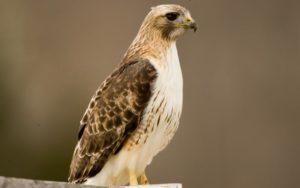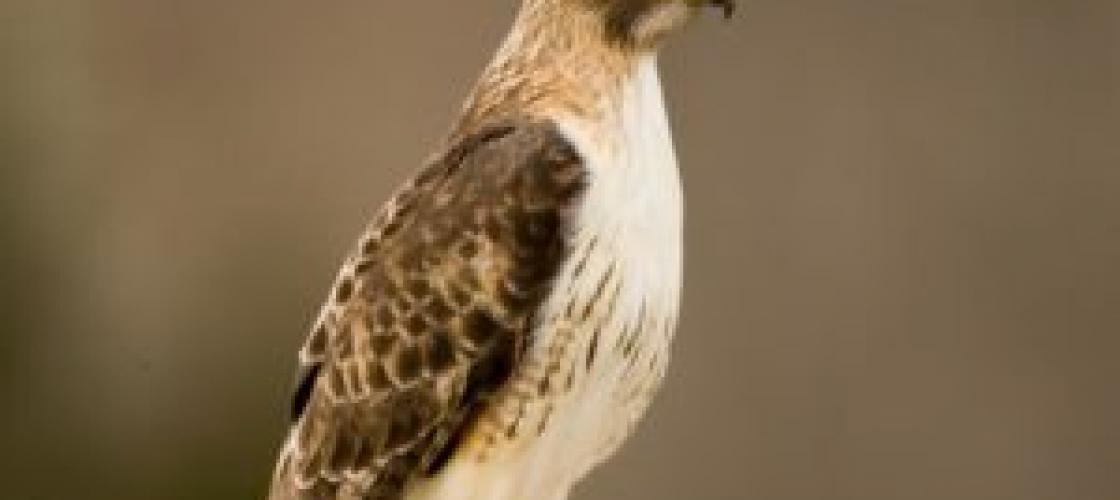As you drive country highways, it sometimes seems that hawks are everywhere -- perched on telephone poles and fence posts, or circling overhead. The typical hawk you'll see is large -- about two feet tall. It sits erect on its perch and, though generally dark brown, displays a puffy white chest that catches your eye. If you look hard, you may be able to average as many as one sighting per highway mile.
Hawks use open roadside to scan the surrounding fields for mice and other prey. As a result, you're better able to see hawks. Roadsides also provide hawks with many hunting perches, such as billboards and poles. The roadside grass, being shorter, enables the hawks to spot their prey more easily too. Interstates, with lots of grass in the ditches and median, seem especially attractive to these birds. Winter is the best season for watching hawks because many have migrated in from the north. They stand out as you scan the stark landscape.
If someone in the car asks you what kind of hawk you are seeing, just say "red-tail," and nine times out of 10 you will be correct. Try to get a view of the adult's rust-colored tail. And your friend will be quite impressed that you've recognized a hawk while speeding by at 55 miles per hour.
Taking Flight: Red-tailed Hawk
- The red-tailed hawk does most of its hunting by watching from a high perch, then swooping down to capture prey in its talons. It also hunts by flying over fields, watching for prey below. Small prey are carried to the perch, while large prey often partly eaten on ground.
- The female hawk remains with young most of the time during first few weeks. The male brings most food, and the female tears it into small pieces to feed to the young. After about 4 to 5 weeks, food is dropped in nest, and the young feed on it themselves.
- Young leave the nest about 6 to 7 weeks after hatching, but are not capable of strong flight for another two weeks or more. Fledglings may remain with parents for several more weeks.
- In courtship, male and female soar in high circles, with shrill cries. Male may fly high and then dive repeatedly in spectacular maneuvers; may catch prey and pass it to female in flight.
Additional facts courtesy of the Audubon Society.


Recent Posts
























